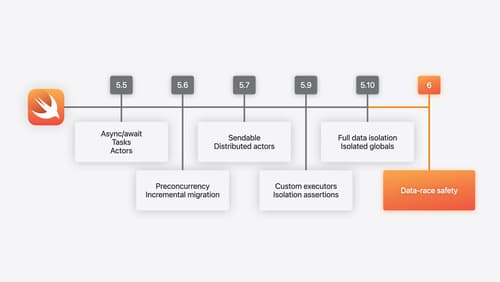Swift macro example
Asked on 2024-08-06
1 search
To see an example of Swift macros, you can refer to the session titled "A Swift Tour: Explore Swift’s features and design." In this session, macros are discussed as a flexible tool in Swift, acting as compiler plugins that transform code. For more details, you can watch the segment on macros starting at A Swift Tour: Explore Swift’s features and design (26:04).
Additionally, the session "What’s new in SwiftData" also covers the use of macros, specifically the index macro, which can be used to make queries more efficient. You can find this information starting at What’s new in SwiftData (11:56).
Relevant Sessions

A Swift Tour: Explore Swift’s features and design
Learn the essential features and design philosophy of the Swift programming language. We’ll explore how to model data, handle errors, use protocols, write concurrent code, and more while building up a Swift package that has a library, an HTTP server, and a command line client. Whether you’re just beginning your Swift journey or have been with us from the start, this talk will help you get the most out of the language.

What’s new in Swift
Join us for an update on Swift. We’ll briefly go through a history of Swift over the past decade, and show you how the community has grown through workgroups, expanded the package ecosystem, and increased platform support. We’ll introduce you to a new language mode that achieves data-race safety by default, and a language subset that lets you run Swift on highly constrained systems. We’ll also explore some language updates including noncopyable types, typed throws, and improved C++ interoperability.

What’s new in SwiftData
SwiftData makes it easy to add persistence to your app with its expressive, declarative API. Learn about refinements to SwiftData, including compound uniqueness constraints, faster queries with #Index, queries in Xcode previews, and rich predicate expressions. Join us to explore how you can use all of these features to express richer models and improve performance in your app. To discover how to build a custom data store or use the history API in SwiftData, watch “Create a custom data store with SwiftData” and “Track model changes with SwiftData history”.
